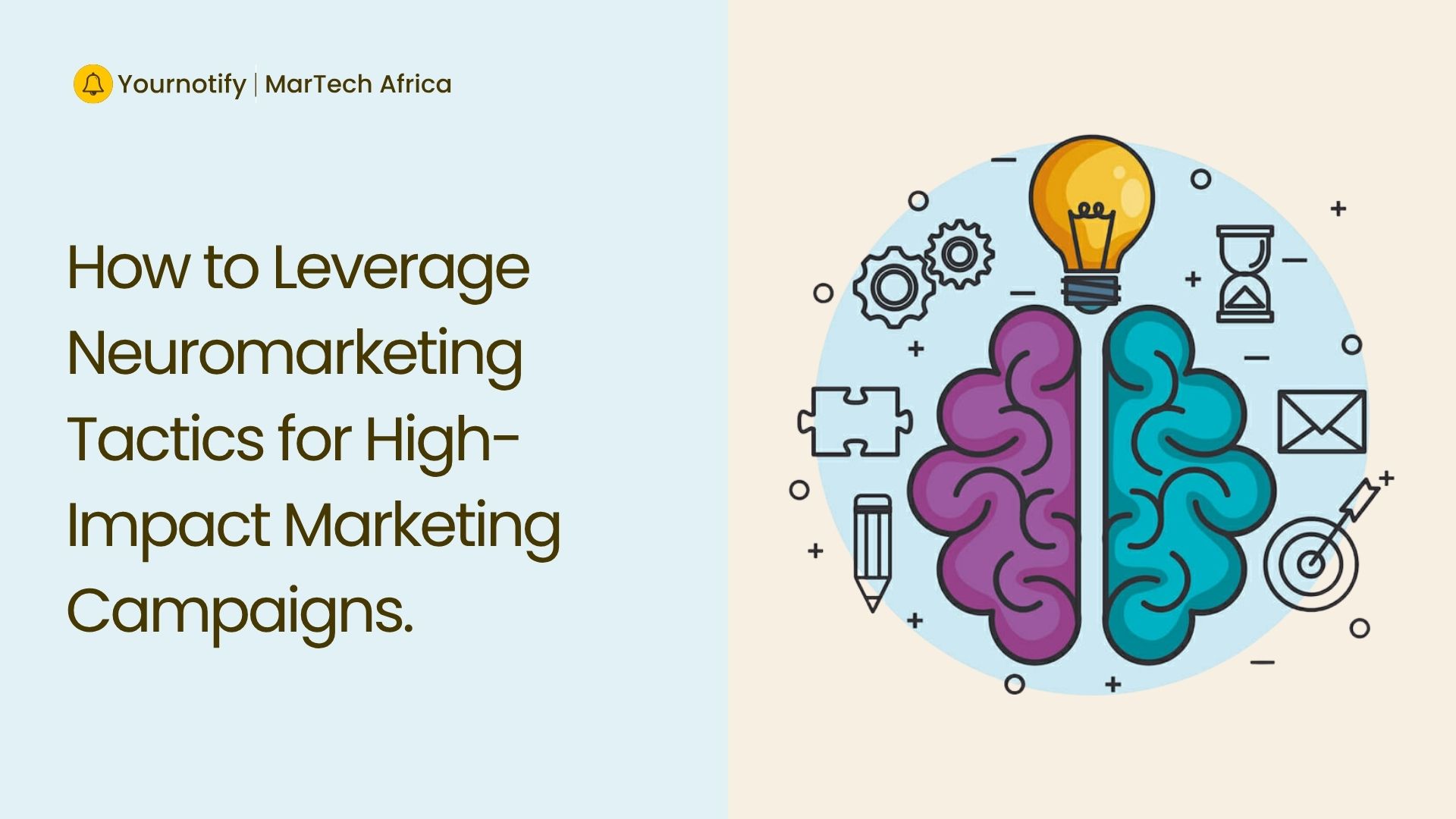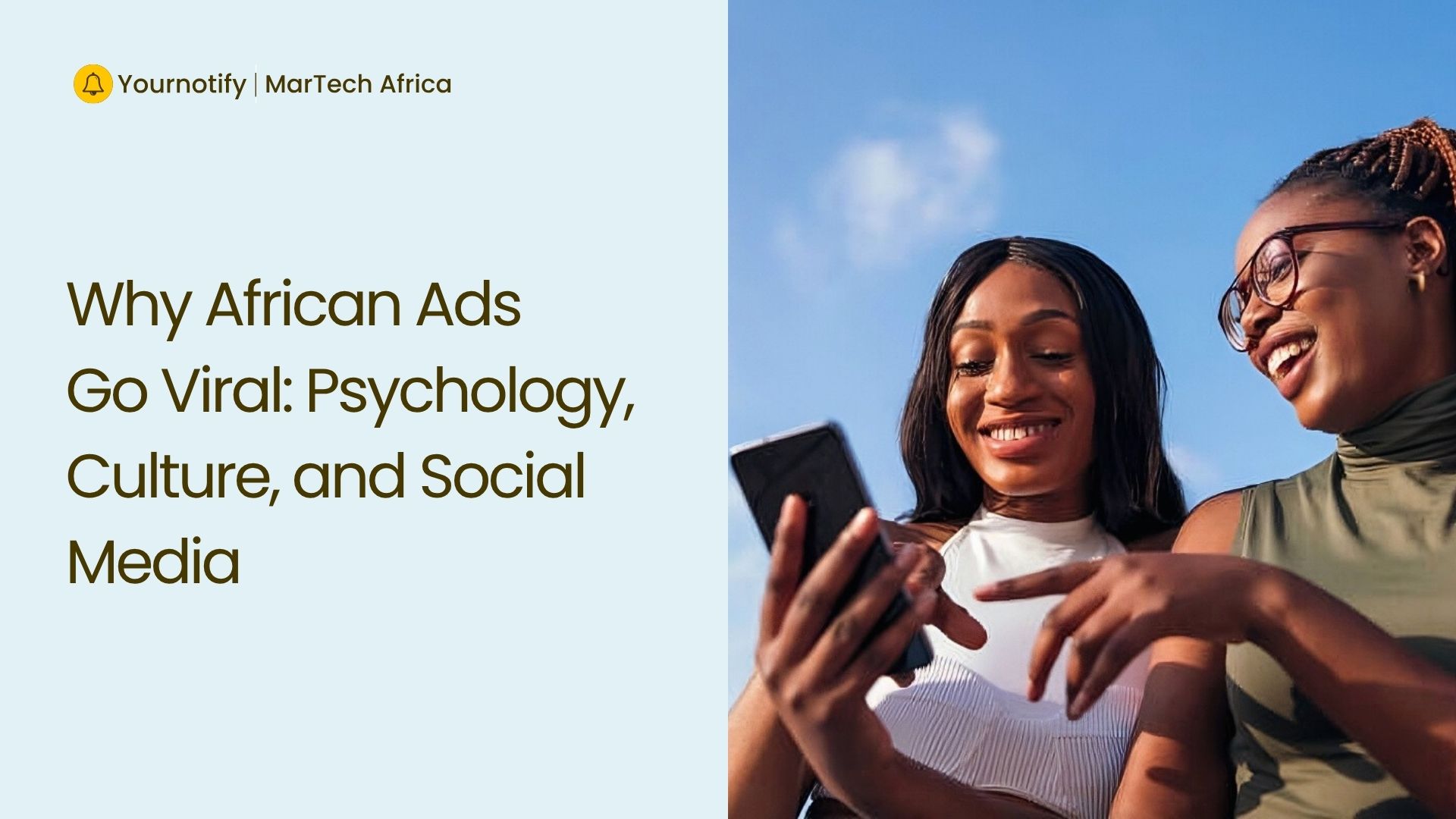Scroll through your phone today and you’ll see dozens of fintechs promising seamless transfers, skincare…

How to Leverage Neuromarketing Tactics for High-Impact Marketing Campaigns.
Having neuromarketing tactics has become an integral part of marketing campaign strategies for businesses striving to stand out in an ever-growing, competitive market. Conventional marketing strategies featuring surveys and focus groups provide good feedback, but they rarely capture the full picture of why consumers make certain purchase decisions.
The truth is that a significant portion of purchasing decisions happens beneath the level of conscious awareness. Professor Gerald Zaltman, a Harvard Business School professor, says 95% of purchase decisions are made in the subconscious mind. This is where neuromarketing comes into play. By basing marketing strategies on neuroscience, businesses can decode the subconscious drivers of consumer behavior with high precision.
What is Neuromarketing?
Neuromarketing is the application of neuroscience in marketing endeavors. Instead of relying solely on what consumers say they want, neuromarketing measures what their brain actually does in response to marketing stimuli, then bases market strategies on this feedback.
Neuromarketing and traditional marketing are essential parts of marketing strategies, but they operate differently. In traditional marketing, the use of focus groups, surveys, and demographic analysis is the core way of predicting consumer preferences. On the other hand, neuromarketing relies on neuroscientific data obtained by measuring consumers’ subconscious reactions. In other words, while the traditional approach asks consumers, neuromarketing captures their feelings.
Using techniques like electroencephalography (EEG), eye tracking technology, facial coding, etc, neuromarketing shows the key ways consumers interact with marketing content. The key ways are:
- Attention: Attention implies the ability of an advertisement to get and hold a consumer’s focus. It’s measured by the amount of time spent on an advertisement material, the elements most focused on, and the parts that drew the most attention.
- Cognition: Cognition refers to how well consumers process and understand an advertisement.
- Emotions: The psychological reaction of a consumer while viewing an advertisement is how emotion is measured. Such emotions occur in the mind. They include excitement, fear, disgust, etc.
- Memory: Memory refers to the extent to which consumers retain and recall an advertisement
Techniques Used in Neuromarketing
The techniques used in neuromarketing to tell how consumers interact with marketing content are:
1. Electroencephalography (EEG)
EEG measures brainwave patterns, capturing emotional responses in real-time.
Application
EEG helps marketing teams test advertisement content and brand messaging before rollout. It reveals which moments in an ad spiked engagement, created confusion, invoked emotions, and more. Instead of traditional survey methods that ask consumers how they feel, EEG captures their feelings directly.
2. Eye Tracking Technology
Eye tracking analyzes gaze patterns and dwell periods on specific visual elements.
Application
Eye-tracking analysis tells which elements in an advertisement get the most attention, overlooked areas, and more. Marketing teams use eye-tracking data to assess whether areas of interest are noticed. If not, the visual layout and messaging can be adjusted accordingly.
3. Facial Coding
Facial coding reads facial movements to detect different kinds of expressions. It checks for frowns, smiles, etc.
Application
Facial coding uses advanced software to see how consumers emotionally react to marketing content. Parts of marketing content that evoke positive or negative strong emotions are detectable using facial coding techniques.
Practical Application of Neuromarketing with Real World Examples
1. Packaging and Product Design
A marketing team benefits by incorporating neuromarketing in packaging and product design. Neuromarketing studies on eye tracking, color psychology, and EEG sensory principles have shown that product packaging design should be based on consumers’ interpretation of color and gaze patterns.
When crafting product design, use appropriate color tone, and direct the consumer’s gaze to key details like logo, brand name, and emotional imagery. Such a data-backed approach which has potential to increase perceived product quality an d purchase intent.
Real Life Example:
McDonald’s use of red and yellow colors for its outlets and food packaging design is a neuromarketing strategy. These bright colors stimulate appetite and convey speed. And by adding carefully selected music, quick decisions, and repeat visits are subconsciously heightened. Their menu engineering, informed by eye-tracking data that reveals consumers’ gaze patterns, influences what to put at eye level to increase sales.
2. Advertising and Content Strategy
Effective advertising based on neuromarketing prioritizes cognitive clarity and emotional resonance. The same applies to content strategy. Through research, the storytelling approach has proven to be powerful, capable of activating the language center of the brain, creating an emotional connection greater than product-focused messaging alone.
Real Life Example:
Coca-Cola’s famous “Share a Coke” marketing campaign reveals the powerful effect of visual storytelling and appealing to the sensory system. The campaign advertisement featured the familiar popping sound of opening a Coke bottle and icy condensation on the bottle. These features create an emotional connection and a lasting memory of the chill Coke drink. Then the emotional connection went a notch further by adding names to the bottles.
3. Pricing and Perceived Value
Neuromarketing reveals that consumers usually don’t evaluate prices in isolation, but use a reference point. Typically, the first price encountered becomes the benchmark for comparison.
You want to present priced products strategically. One way is to position a premium product alongside a mid-tier option, creating an anchoring effect that influences perception of value across the product line.
Building a Neuromarketing-Informed Campaign Strategy
1. Set Clear Goals and Success Measures
Before using neuromarketing methods, determine what you want to measure. Do you aim to grab attention? Boost brand memory? Spark emotions? Drive purchases? Each goal might need different tools and approaches.
2. Group Your Audience by Brain Type
People don’t all react the same way to marketing. Think about how age, lifestyle, and culture shape emotional responses. A color or story that clicks with one group might turn off another. Your brain research should take these differences into account.
3. Check Creative Parts Step by Step
Try out neuromarketing tools to check campaign parts—headlines, images, colors, and message style—before you roll them out. Eye-tracking shows which design bits grab attention. EEG measures how people feel and how interested they are. Facial coding catches honest reactions.
Make changes based on what you find out. This approach helps you move faster from an idea to a campaign that works while spending less on creatives that don’t perform well.
4. Mix Different Senses
The best campaigns involve many senses. How things look, sound cues, things you can touch (in stores), and even smells create a whole sensory world that wakes up more brain paths and can make experiences stick in the mind.
5. Focus on Being Real and Clear About Ethics
Neuromarketing packs a punch, but wielding such influence requires care. The aim should always be to craft campaigns that connect with consumers’ needs and value, not trick them using sneaky emotional ploys.
Conclusion
Consumer decision-making is not a simple, rational process. It’s a complex interplay of emotion, cognition, sensory input, and neurological response. By applying insights from cognitive science, understanding how the brain processes information, what triggers emotional engagement, and how to design for maximum impact, marketers can create campaigns that resonate at a fundamental human level.
Related Content


